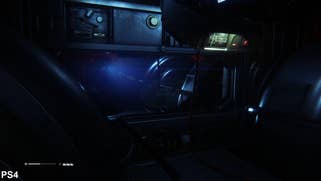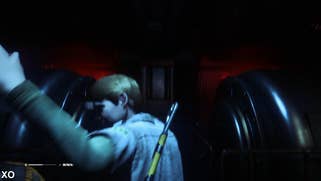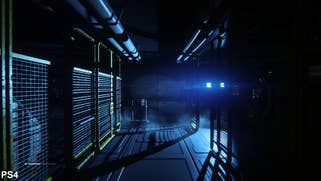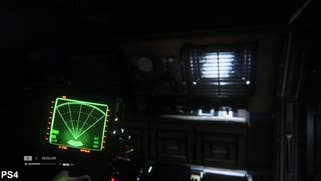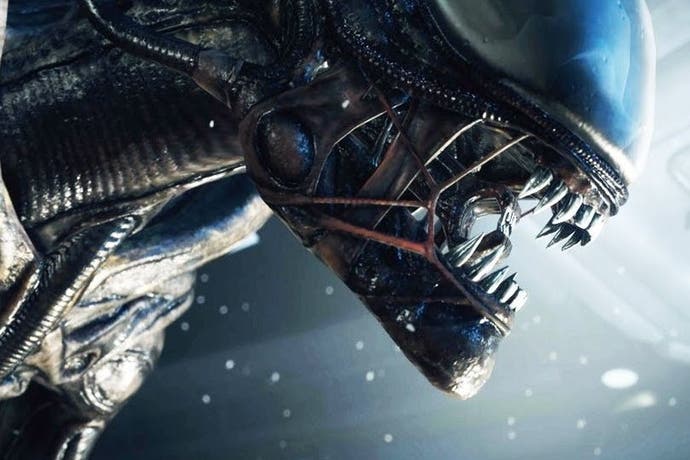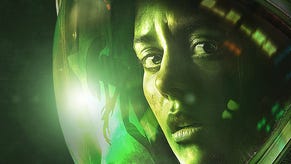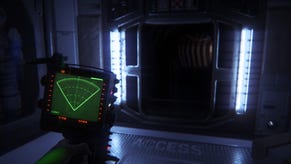Performance Analysis: Alien: Isolation
Ripley's believe it or not.
Right now we're still working on delivering a full-face off of Alien: Isolation - including coverage of the PC game - but an initial hands-on with the first few hours of the game on PS4 and Xbox One turns out to be quite revealing. Graphical quality is generally excellent on both console platforms as we explore the terrorised Sevastopol space station, but it's clear that performance is the clear differentiating factor.
The first few hours in Alien: Isolation are slow-burning, featuring little interaction with the titular xenomorph, but the game works beautifully in generating a foreboding atmosphere, with an escalating sense of horror as things quickly start to fall apart. The use of ambient sound, dynamic lighting and layers of post-processing including depth of field, motion blur, chromatic aberration and film grain, all help to replicate the gritty aesthetic of the first Alien movie, generating an air of uneasiness when exploring new locations.
This heady combination also provides some great scares, too: the rumble of falling objects in the distance, screams of people suffering a horrifying death, and the brief flashes of shadows cast by emergency lighting are distinctly unnerving when the threat of the Alien is never far away.
Here, the same level of graphical quality extends to both PS4 and Xbox One versions of Alien: Isolation. Native resolution comes in at 1080p using what appears to be a post-process anti-aliasing solution, while the artwork and effects appear a close match, right down to the dithered shadow edges and how reflections and specular highlights are displayed. The main points of difference in our shots come down to the dynamic lighting which changes the way environments and characters are illuminated in real-time, along with slight variances in depth of field and motion blur at any given moment.
In essence, we have a locked parity between the two consoles in terms of image quality, but when it comes down to performance, it's clear that Sony console offers up a smoother and more consistent gameplay experience. The PS4 delivers a v-synced, fairly stable 30fps presentation with no screen-tear. Combat scenes against the alien and other foes incur a light drop in smoothness, but the engine quickly recovers and any loss in performance is minor.
The refresh rate isn't perfect though, and dips in smoothness appear in the form of brief pauses, which prove a little distracting. Here we see frame-times between 200-460ms depending on the amount of duplicate frames displayed. The anomaly regularly occurs throughout the game, although the frequency appears to vary depending on the environment.
Similar engine stalls also appear on the Xbox One, but are much rarer and thus less distracting as a result. However, general performance is more noticeably impacted in other areas, and this has larger implications for gameplay. Frame-rates are frequently in a state of flux and this is joined by some screen tearing. Slowly exploring the damaged Sevastopol space station is enough to see a small impact in smoothness in many areas, while scenes where alpha effects and multiple light sources come into play hit the console much harder.
Creative Assembly stops short of using a full adaptive v-sync in order to prevent tearing appearing further down the screen where it will be most noticeable, instead opting to flip the framebuffer late to prevent heavier drops in frame-rate but without further compromising image consistency. It's an interesting solution, but even so, performance looks and feels shakier on Xbox One - judder is a regular issue and controller feedback is also affected by the uneven frame delivery. Combat is best avoided, so Alien: Isolation doesn't require twitch response, but up against a surprise attack the extra level of consistency on the PS4 certainly has its benefits over the less stable Xbox One code.
Indeed, the situation is pretty interesting: Creative Assembly has targeted parity in terms of resolution and graphical fidelity across both consoles, but in doing so has incurred a performance hit on the Xbox One. Perhaps lowering resolution might have worked out as an acceptable compromise in order to achieve a more stable frame-rate. The dimly lit environments and layers of post-processing are likely to reduce the appearance of scaling artefacts, while the game's aesthetic is drawn towards softer imagery in order to create a distinct, filmic look which doesn't rely heavily on raw crispness.
At this point the PS4 has the advantage, but there's plenty more to cover in the upcoming Face-Off. Cut-scenes deserve some exploration as there are clear issues with judder on both consoles, while we're particularly looking forward to checking out the game on PC, where initial impressions suggest that a locked 60fps is attainable without splashing out on the latest and greatest gaming hardware.
